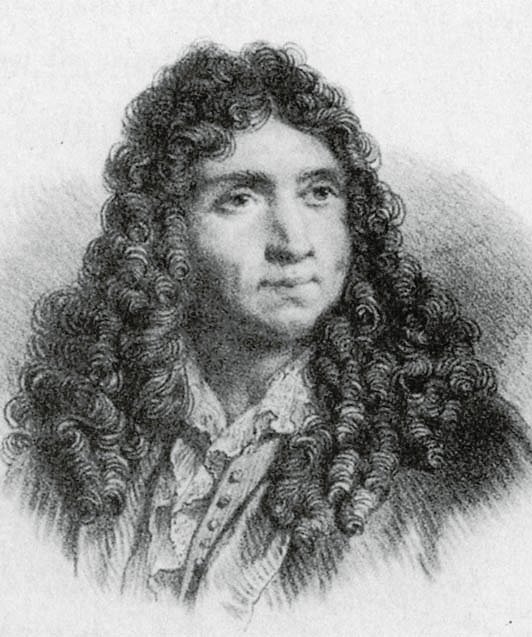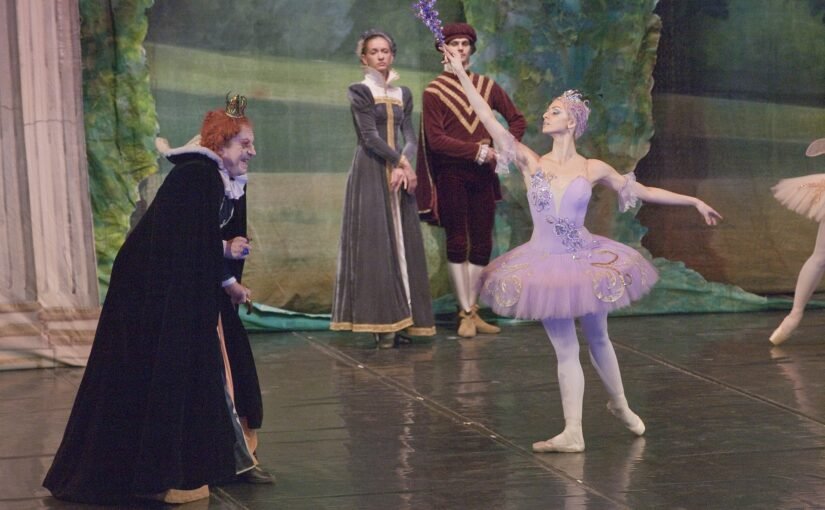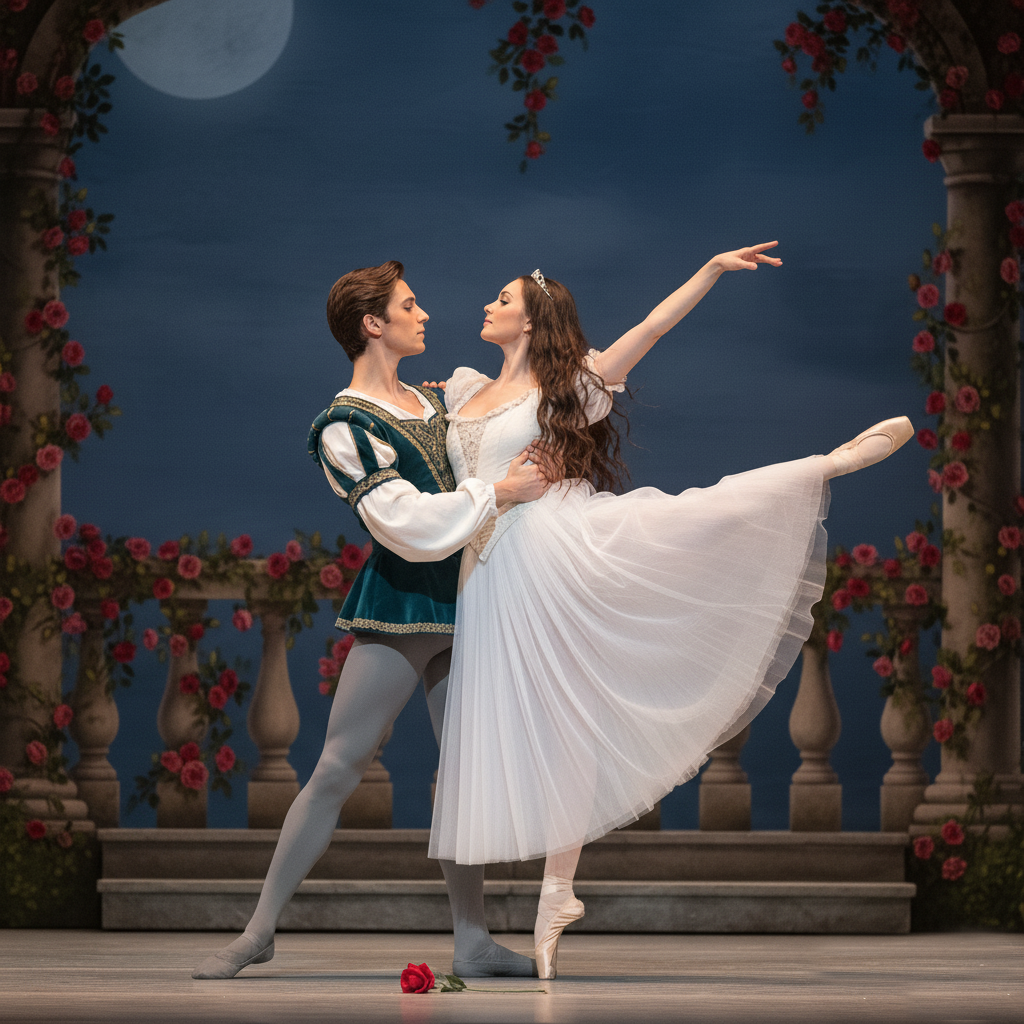The Ballet de la Nuit was one of the most magnificent spectacles of the 17th century. This “ballet de court” (court ballet) was presented in Paris in 1653. It lasted thirteen hours and featured 43 scenes that covered, in real time, the four watches of the night. The work combined mythological episodes, such as the story of Venus and Endymion, with scenes from everyday life. However, the Ballet de la Nuit went down in history as the one that established King Louis XIV’s identity as the Sun King. At the time, the king was barely fourteen years old. In the work, he played the god Apollo, the personification of the Rising Sun. His final appearance earned him the nickname that would follow him throughout his life: Le Roi Soleil, the Sun King. In this article, we’ll tell you the story of this famous ballet in detail.

Table of Contents
Louis XIV’s Legacy in Shaping Classical Ballet
Louis XIV (1638-1715), who reigned over France for over 72 years, was much more than an absolute monarch. Under his long reign, France experienced an unprecedented cultural flourishing. Thanks to Louis XIV, ballet was established as a performing art.
Louis XIV, passionate about dance since childhood, knew how to make this discipline an exercise of his power. He understood that through dance, he could seduce and impress his courtiers and convey his image as an all-powerful monarch. From a young age, he participated in numerous court ballets, demonstrating great skill and seriousness in each performance.

His training included renowned masters such as Pierre Beauchamp, who would later codify the five classical ballet positions, laying the foundations for the technique that endures to this day. Below are some of the most notable ballets in which he danced:
- Ballet de Cassandre (1651)
- Ballet de la Nuit (1653)
- Ballet des Plaisirs (1655)
- Ballet des Saisons (1661)
- Ballet des Arts (1663)
One of the most significant moments in using dance in the service of absolutism was the creation of the Royal Ballet of the Night (Ballet Royal de la Nuit or Ballet de la Nuit) in 1653. This grandiose, all-night event had a specific purpose: to affirm the power of Louis XIV. In this work, at just fourteen years old, Louis XIV played the role of Apollo, a central figure symbolising light and power, literally eclipsing his adversaries and emphasising the idea that he was the source of all power and glory. This ballet legitimised his authority and marked Louis XIV’s rise as absolute king, lord of the court and the state. On the other hand, from that moment on, Louis XIV would go down in history as “The Sun King.”

Louis XIV and the Birth of Professional Ballet
But his legacy goes beyond mere performance. Louis XIV was the great architect of the institutionalisation of ballet. In 1661, he founded the Académie Royale de Danse, the first institution dedicated to the training of dancers and the preservation of technique. Shortly after, he supported the creation of the Académie Royale de Musique (now the Paris Opera), where ballet became a fundamental part of stage works.
To sum up, thanks to Louis XIV, ballet transformed from an amateur court entertainment into a codified and professionalised artistic discipline, with techniques, rules, and structures that remain the foundation of classical ballet today. The right of French ballet to claim supremacy would now be undisputed. French masters and dancers would be in high demand throughout Europe, laying the foundations for international classical ballet.

Le Ballet de la Nuit at a Glance
- Choreography: Chancy, Mollier, Manuel, Vertpré, Jean Baptiste Lully
- Music: Jean de Cambefort, Jean Baptiste Boësset, Michel Lambert, Jean Baptiste Lully
- Design: Giacomo Torelly (machine effects), Henry de Gissey (costume)
- Libretto: Isaac de Benserade (verses)
- First Production: Salle de Petit Bourbon, Paris, 23 February 1653
- Principal Dancers: included Jean-Baptiste Luly, Pierre Beauchamps, and King Louis XIV (as The Sun)
The Music of Ballet de la Nuit
At that time, several Italian artists settled in France, and it was common for them to “Frenchify” their names. Such was the case of Giovanni Battista Lully, whose name was Frenchified to Jean-Baptiste Lully. After his performance in the Ballet de la Nuit, Lully was appointed composer of music for the royal ballets.
This is how this artist established himself at the French court as a first-class music maestro. He is considered the creator of French opera. His love of theatre led him to collaborate closely with Molière, when together they created the high form of entertainment known as comédie-ballet, one of the historical and aesthetic benchmarks of the era. It was a new genre, consisting of a series of interconnected diversions unified by a predominant comedy of manners that gave it great narrative homogeneity. With Lully’s compositions, the Italian influence on French music became even more pronounced.
Synopsis of the Ballet de la Nuit
The Ballet de la Nuit consisted of 43 independent dances, representing twelve hours (from 6:00 p.m. to 6:00 a.m.), divided into four watches, each lasting three hours. The ballet intends to show everything that happens in Paris between dusk and dawn.

- Act I: From 6:00 to 9:00 p.m. represents the events that normally occur at this time in the countryside and the city. The scene, first of all, depicts a distant landscape near the sea. The Sun sets, and Night appears in a chariot of clouds pulled by owls and accompanied by twelve Hours.

- Act II: From 9:00 p.m. to midnight, amusements reign, plays and balls. Venus descends from the sky, bringing Sport (danced by the King), Joy, and Comus, the god of joy. On the other hand, Venus drives away the Three Fates, Old Age, and Sadness, for it is time for celebration. The celebration ends with a saraband danced by five children dressed as Spaniards.

- Act III: From midnight to 3:00 a.m. Represents the fantasies, freedoms, and horrors of the night. Cupid guides Diana, goddess of the moon, to the handsome shepherd Endymion. A cloud discreetly hides the lovers.

- Act IV: Between 3:00 a.m. and 6:00 a.m. Morning Star appears, followed by Aurora in her chariot, surrounded by the twelve Hours of the day, who withdraw upon seeing the rising sun, played by the King. He dances the “grand ballet” with the spirits of Honor, Grace, Love, Valor, Victory, Favor, Fame, and Peace, who come to pay homage to him. In this magnificent final tableau, Louis is proclaimed the Sun King, endowed with all qualities and bringing all these benefits to his people.

The Hidden Order in Ballet de la Nuit
It would seem that nothing was omitted from this ballet: burlesque, social comedy, allegory, classical mythology, pastoral and romantic characters, monsters, and animals. All followed one another, with sumptuous scene changes and lavish costumes.
Despite the interweaving of genres and characters, a definite theme unites the seemingly disparate parts. There is a clear division of the evening’s progression and the activities appropriate to each section. The numerous scenes of transformation represent the gradual elimination of conflict and the overthrow of disorder, leading to the final climax and apotheosis: the rising sun on a new day, a new era cleansed of disorder, suffering, and crime.


The Masterminds behind Ballet de la Nuit
Ballet de la Nuit brought together in a single performance the three greatest names in the history of dance from the second half of the 17th century. At first, King Louis XIV, a dance enthusiast and patron. Second, Jean-Baptiste Lully (1631–1687), appointed court composer that same year. Lully not only participated in the ballet but also composed part of the music and choreography. This artist was destined to become the protagonist of musical theatre in France for several decades. Finally, we have Pierre Beauchamp (1631–1705), dancer and partial choreographer of Ballet de la Nuit. Beauchamp would later become the founding father of the French academic dance tradition, a celebrated choreographer and collaborator of Molière and Lully.
The libretto written by the talented playwright Isaac de Benserade and the spectacular set, designed by the Italian set designer Giacomo Torelli, also contributed to the ballet’s success.


Ballet de la Nuit and Its Symbolism
As the Fronde (the civil war that raged in France between 1648 and 1653) subsided, Cardinal Mazarin, Louis XIV’s prime minister and advisor, returned to Paris. Cardinal Mazarin clearly understood the importance of courtly spectacle, particularly ballet, as a political tool. So, he commissioned the Ballet de la Nuit after the defeat of the rebels in 1653 to promote Louis XIV as an absolute monarch and authority figure.

Ballet de la Nuit, a thirteen-hour ballet, with the king in the starring role, was a political and theatrical feat. It was performed at night, representing unrest, nightmares, and darkness. But at dawn, Louis appeared as the Sun. Dressed in gold, rubies, and pearls, with brilliant diamond rays shooting from his head, wrists, elbows, and knees, and with rich ostrich feathers (a coveted symbol of nobility) piled on his head, Louis conquered the night. To emphasise this point, he repeated his performance for the court and in Paris eight times during the following month.
Louis XIV as Apollo: When Light Conquers Darkness
Louis XIV wished to be known as the Sun King for political reasons. He did not choose to dance the role of Apollo merely for pleasure. The Greek god Apollo was a favourite of artists of all disciplines. He was the god of music, poetry, and dance, as well as of the visual arts, science, and philosophy. Essentially, he was the god of intellect and the enemy of Barbarism. Apollo was the bearer of light and, as such, could dispel all darkness.
The display of absolute authority in the person of the main character, before whom even people of rank had to kneel, conveyed a political message. It indicated a total centralism that used cultural symbols to exalt the monarch above all others.
In short, Ballet de la Nuit was intended to show the entire audience the victory of legitimate power and order over revolt and anarchy (The Fronde), conveying the image of a young conquering sovereign, confident in his now consolidated authority.

How Ballet de la Nuit Inspired Films, Musicals, and Dance
Le Roi Soleil Musical
Le Roi Soleil is a French musical about the life of Louis XIV, choreographed by Kamel Ouali. It premiered on September 22, 2005, at the Palais des Sports in Paris.
You can watch the full version here:
If you’d like to see the show live, you can find the official website here.
Le Roi Danse (The King Dances): A Cinematic Reenactment
This period in Louis XIV’s life and the emergence of his passion for dance are portrayed in the film “Le Roi Danse” (the King Dances) (2000), directed by Gérard Corbiau. The film highlights the relationship between Louis XIV and the composer Jean-Baptiste Lully, as well as their collaboration on the Royal Ballet of the Night.
In a memorable scene from the film, the actor who plays Louis XIV, Benoît Magimel, takes the stage and plays the role of Apollo, embodying this radiant, irresistible, and conquering king. Through the eyes of the young king, we perceive Louis XIV’s pride, but also his desire to control and dominate both his subjects and the arts.
The King Dances Ballet
This ballet was inspired by Le Ballet de la Nuit, the dance performance in which the newly crowned boy king first appeared as Apollo, earning him the nickname Le Roi Soleil, or the Sun King. The choreography is by British artist David Bintley, and the music is by Stephen Montague. The Birmingham Ballet performed it for the first time in 2015. On the other hand, the BBC produced a documentary the same year.
You can watch the full documentary here:





Leave a Reply